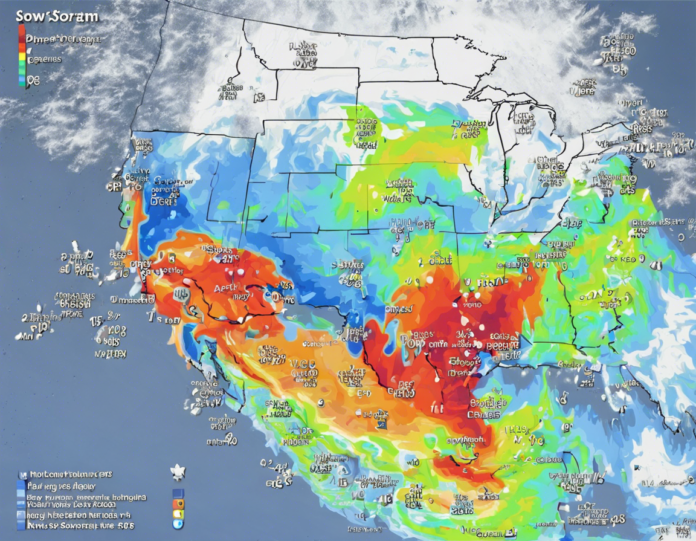Winter is a beautiful season where landscapes are covered in a blanket of snow, lending a serene and picturesque view. However, along with its scenic beauty, winter also brings challenges in the form of snowstorms. These powerful meteorological events can wreak havoc on communities, causing disruptions to daily life and posing risks to property and personal safety.
Understanding Snowstorms
Snowstorms, also known as blizzards, occur when strong winds combine with falling snow, reducing visibility and creating hazardous conditions. These intense winter storms are characterized by heavy snowfall, strong winds, and cold temperatures. Snowstorms can last for a few hours to several days, depending on their intensity and movement.
Types of Snowstorms
-
Nor’easters: These storms are common along the East Coast of the United States, bringing heavy snow, strong winds, and coastal flooding.
-
Alberta Clippers: Fast-moving storms that originate from Alberta, Canada, and move southeastward, bringing light to moderate snowfall.
-
Lake-Effect Snowstorms: Occur near the Great Lakes when cold air passes over the warmer lake waters, picking up moisture and dumping heavy snow on the downwind shores.
Impact of Snowstorms
Snowstorms can have a wide-ranging impact on various aspects of daily life, including:
-
Transportation: Snowstorms can lead to road closures, flight cancellations, and delays in public transportation.
-
Power Outages: Heavy snow and strong winds can damage power lines, leading to widespread power outages.
-
School Closures: To ensure the safety of students and staff, schools may be closed during severe snowstorms.
-
Business Disruptions: Snowstorms can disrupt businesses, leading to closures and affecting productivity.
-
Health Risks: Exposure to extreme cold during snowstorms can pose health risks, such as frostbite and hypothermia.
Preparedness and Safety Tips
To stay safe during a snowstorm, it is essential to be prepared and take necessary precautions. Here are some tips to help you navigate through a snowstorm safely:
Before the Storm
-
Stock Up: Ensure you have an emergency kit with essential supplies like food, water, medications, and a flashlight.
-
Stay Informed: Monitor weather forecasts and stay updated on any storm warnings or advisories.
-
Prepare Your Home: Insulate pipes, seal windows and doors, and have a backup heating source in case of power outages.
During the Storm
-
Stay Indoors: Avoid unnecessary travel and stay indoors to stay safe from the storm.
-
Dress Warmly: Wear layers of clothing to keep warm and prevent frostbite.
-
Check on Others: Make sure vulnerable individuals such as the elderly or those with medical conditions are safe and warm.
After the Storm
-
Clear Snow Safely: Shovel snow carefully to avoid overexertion and potential injuries.
-
Check for Damage: Inspect your property for any damage caused by the storm, especially roofs and gutters.
-
Stay Off Roads: Allow authorities to clear roads before venturing out to prevent accidents.
Frequently Asked Questions (FAQs)
- What is the difference between a snowstorm and a blizzard?
-
A snowstorm refers to a weather event with significant snowfall, while a blizzard specifically includes strong winds causing low visibility.
-
How is snowfall measured during a snowstorm?
-
Snowfall is typically measured in inches or centimeters using a ruler or measuring stick placed on a flat surface.
-
What should I include in an emergency kit for a snowstorm?
-
An emergency kit should include non-perishable food, water, medications, a flashlight, batteries, a first aid kit, and blankets.
-
How can I prepare my car for a snowstorm?
-
Before a snowstorm, ensure your car has a full tank of gas, adequate antifreeze, good tires, and emergency supplies such as a shovel and blankets.
-
What should I do if I get stranded in my car during a snowstorm?
- Stay in your car, run the engine periodically for warmth, keep the windows slightly open to prevent carbon monoxide buildup, and signal for help.
In conclusion, while snowstorms can be challenging to navigate, being prepared and taking proactive measures can help you stay safe and minimize the impact of these winter storms. By understanding the nature of snowstorms, preparing in advance, and following safety guidelines, you can effectively weather the storm and emerge unscathed. Stay informed, stay safe, and embrace the beauty of winter, even when faced with the fury of a snowstorm.








